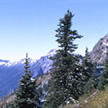| Report Documents
|
|
|
| |
| Map Plotfiles
|
-
No files of this type available
|
| |
| Data Files
|
-
No files of this type available
|
| |
| Digital Map Files
|
-
No files of this type available
|
| |
| Image Document
|
-
No files of this type available
|
| |
| Video Files
|
-
No files of this type available
|
| |
|
All Documents
|
|
|
| Contact
|
|
-
If you have any questions on the information presented, or require additional report data or attachments, please contact the
Ministry.
|
|
|
A three-dimensional hydrogeological conceptual model of the Nanaimo Lowlands region from Englishman River to Deep Bay based on previous work to refine aquifer geometry and potential aquifer-stream hydraulic connectivity. A GIS-based analysis of stream-aquifer hydraulic connection was completed using modeled aquifer bottom and top surfaces, stream bed elevations and interpolated groundwater elevation in the bedrock and unconsolidated formations.
|
Author: Antonio Barroso, Sandra Richard, Matt Vardal and Sylvia Barroso
|
|
|
Date Published: Jan 2025
|
Report ID: 63153
|
Audience: Government and Public
|
An updated three-dimensional hydrogeological conceptual model of the Nanaimo Lowlands region from Englishman River to Deep Bay was created using Leapfrog Works software. This model builds on previous work to refine the geometry of aquifers in the region, update bedrock topography and delineate groundwater elevations for both bedrock and overburden systems. The revised 3D model provided a framework for interpreting potential hydraulic connectivity between streams and aquifers in the region.
Five new unconsolidated aquifers and one new bedrock aquifer were mapped and classified. The boundaries of eleven existing aquifers were modified, and the boundaries of two existing aquifers remained unchanged. Aquifer classification reports were prepared or revised including well-aquifer correlations, model interpretations, local knowledge and classification criteria. Provincial observation wells were reassigned to mapped aquifers based on water level characteristics, completion details and water chemistry.
A GIS-based analysis of stream-aquifer hydraulic connection was completed using modelled aquifer bottom and top surfaces, streambed elevations and interpolated groundwater elevation in the bedrock and unconsolidated formations. The resulting raster coverages illustrated the streams discretized into segments and classified as: a) disconnected, b) hydraulically connected - gaining, or c) hydraulically connected - losing or perched. Stream profiles were prepared which show the hydrostratigraphic units within a cross-sectional area underlying major streams.
This region experiences long, dry seasons, during which there is little precipitation, therefore streams with sustained summer flows likely receive groundwater discharge which is critical for maintenance of instream aquatic habitat. The likelihood of hydraulic connection was observed to vary according to aquifer subtype, topography and location in the watershed. Overburden deposits are generally thinner at high elevation where headwater streams were observed to be hydraulically connected and perched or losing, then transitioning to gaining from fractured bedrock aquifers, for example in the upper reaches of Englishman River, Swane Creek, French Creek, and Whisky Creek. In the mid-elevation transition from mountain front to lowlands, overburden deposits become thicker, including coarse-grained glacial kettle and kame and glaciofluvial deposits. Smaller unconfined or partially confined aquifers associated with these deposits are likely connected to lower order streams, including Whisky Creek, Spider Lake, and sub-tributaries of Kinkade Creek and Little Qualicum River.
In the southeastern portion of the study area, lower-order streams such as Romney Creek, Carey Creek, Morningstar Creek, Grandon Creek, and Thames Creek are underlain by low permeability Vashon Till, and were less likely to be connected. However, wells completed in the valley bottom alluvial deposits immediately bordering these creeks may be connected. Shallow drilled and dug wells intersecting discontinuous sand and gravel seams within lower permeability deposits are also important sources of water supply.
Higher order rivers including Englishman River, French Creek, Little Qualicum River, and Qualicum River with deeply incised valleys have down cut through Capilano-Vashon sediments and Quadra Sands, to intercept older Cowichan Head-Dashwood-Mapleguard deposits. As a result, these streams may gain groundwater from confined aquifers along their course towards the ocean either directly or indirectly through seepage and spring flow along the valley sides. These major rivers are also likely connected to river-valley alluvial aquifers and deltaic (Salish-Capilano) sediments deposited at the river mouths. Hydraulic connection to fractured bedrock aquifers was considered likely where bedrock is exposed along the stream channel.
|
Report Type
Subject
| |
Region - Vancouver Island |
| |
Watershed Groups - 920 - Vancouver Island (East) Rivers |
| |
Water Information - Groundwater |
| |
Water Information - Water Management |
| |
|
|
